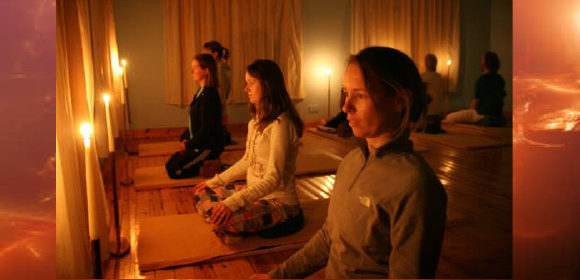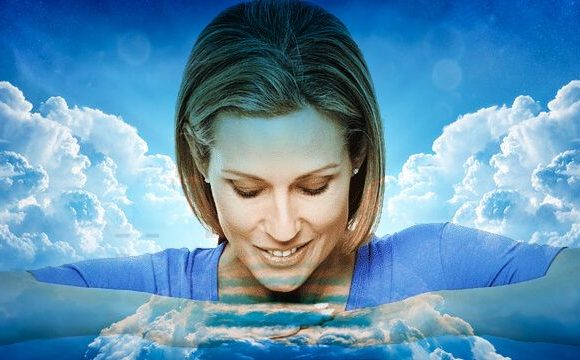The question of what happens after death is as old as humanity itself. Across cultures, faiths, and generations, people have looked to the heavens, to the earth, and to the mystery of the unseen to understand what awaits beyond the final breath. The search for answers to life after death is not merely curiosity. It is a deep spiritual yearning to make sense of existence, to find meaning in our mortality, and to know that love and consciousness continue beyond the body.
Although the details differ from one belief system to another, a striking truth weaves through all traditions: death is not the end. It is a transition, a continuation, and for many, a sacred return. Exploring these teachings not only comforts those who grieve, but also profoundly influences how we choose to live, love, and grow while we are here.
Ancient Wisdom and the Eternal Journey
Ancient civilisations viewed death not as a finality, but as a journey to another realm. The Egyptians believed that life after death depended on the soul’s moral integrity. They envisioned the Ka and Ba – aspects of the soul – continuing their journey in the afterlife, guided by divine forces. The famous Book of the Dead was created to help souls navigate that transition, offering prayers and instructions for safe passage through the spiritual world.
In ancient Greece, philosophers such as Plato described the soul as immortal, existing before birth and surviving beyond death. He taught that the soul undergoes cycles of learning and purification, returning to the world to continue its evolution. This idea of reincarnation echoes through many later traditions and remains central in Eastern spirituality today.
Among African traditions, including those within South Africa, the afterlife is intimately connected to the ancestors. The dead are not distant. They are present in daily life as guardians and intermediaries between the living and the divine. Ancestor veneration expresses the belief that the bond between generations is eternal. When one passes on, they join the ancestral realm, guiding their descendants with wisdom and protection.
Eastern Perspectives – The Cycle of Rebirth and Liberation
In Hinduism, the soul (Atman) is eternal and passes through many lifetimes in a continuous cycle of birth, death, and rebirth, known as samsara. The purpose of life is to learn, evolve, and eventually attain moksha – liberation from this cycle – when the soul merges with the divine source, Brahman.
Buddhism shares similar ideas but emphasises the impermanence of the self. Rebirth continues until one achieves enlightenment, or nirvana, the cessation of suffering and the realisation of ultimate truth. These teachings encourage mindfulness and compassion, reminding us that our thoughts, words, and actions shape not only this life, but also the journey that follows.
The Taoist perspective, rooted in Chinese philosophy, views death as part of the natural balance between yin and yang. Life and death are not opposites, but phases of the same eternal flow of energy, chi. To live well is to live in harmony with the Tao – the way of nature and the universe – so that when death arrives, it is met with peace rather than fear.
Western Spirituality and the Promise of Eternal Life
In Christian tradition, life after death is understood as eternal union with God. The soul, according to this faith, continues beyond the grave to either a heavenly realm of divine love or a state of separation from it. Central to this belief is the idea of resurrection and redemption – that death is overcome through spiritual faith and the grace of divine love.
Islam also teaches a profound vision of life beyond death. The Qur’an describes the Barzakh, a realm between death and resurrection, where the soul awaits judgement. The righteous are rewarded in paradise, a place of peace and beauty, while those who acted unjustly are purified through spiritual reckoning. These teachings encourage living with integrity, compassion, and awareness of divine accountability.
In Judaism, beliefs about the afterlife are diverse. Some traditions focus on Olam Ha-Ba – the world to come – a spiritual realm of closeness to God. Others emphasise the importance of this life as the space where we shape our eternal legacy through good deeds, justice, and love.
Despite their differences, all Abrahamic faiths share the conviction that the soul continues beyond death and that how we live now determines the quality of our eternal journey.
Modern Spirituality – Consciousness Beyond the Body
In our time, many spiritual seekers have moved beyond rigid dogma, embracing a more experiential understanding of life after death. Mediumship, near-death experiences, and spiritual communication have all provided glimpses into the continuity of consciousness. Evidential mediums bring forward specific, verifiable details from those who have passed, offering proof that the soul remains aware and active in the spirit world.
Modern mystics and philosophers often describe the afterlife not as a place, but as a vibrational state of being. The soul continues in realms of energy that correspond to its level of awareness and love. From this perspective, heaven and hell are not external destinations, but inner states that reflect the harmony or dissonance of one’s soul.
Such understandings invite us to take responsibility for our own evolution. Every act of kindness, forgiveness, or self-awareness raises our vibration, preparing us for smoother transition into the spirit world when our earthly journey ends.
How Beliefs About the Afterlife Shape the Way We Live
Our understanding of life after death profoundly influences how we live today. When we believe that life continues, we begin to value growth, compassion, and service more deeply. We realise that relationships do not end with physical separation, and that love, once given, never dies.
Knowing that our actions carry spiritual consequences encourages ethical living. It reminds us that the soul’s development is an ongoing journey. We are not here simply to survive or accumulate possessions, but to awaken and express divine consciousness in human form.
Furthermore, belief in the afterlife softens our fear of death. It teaches us to see death not as a punishment, but as a sacred transformation. It helps us face grief with hope, knowing that the bond between souls transcends time and dimension.
When we understand life and death as two sides of one great cycle, we live with greater purpose. We seek peace rather than conflict, compassion rather than competition, and authenticity rather than illusion. We become more present, cherishing this life as a temporary yet precious classroom for the soul.
The Eternal Continuum of the Soul
Across all traditions, one truth echoes: we are eternal beings. The body may perish, but consciousness continues in ways that words can barely describe. Life after death is not only a promise of reunion or reward. It is a reminder of who we truly are – spirit expressing itself through matter, returning again and again to love.
When we live with this awareness, fear diminishes and reverence grows. Every breath, every act of kindness, and every moment of awakening becomes part of the eternal story of the soul.
Death, then, is not the end. It is the next great adventure, the doorway through which we pass to return to the infinite light from which we came.







